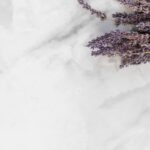Terrazzo, a versatile and durable natural stone used as a flooring material, has been a popular choice in both residential and commercial spaces for centuries.
This composite material, often made from a combination of marble chips, quartz, and other aggregates, is renowned for its stunning beauty and exceptional durability.
From elegant hallways and lobbies to stylish kitchen countertops and bathroom floors, terrazzo adds a touch of sophistication and charm to any space.
Like any other surface, terrazzo requires regular maintenance and cleaning to ensure its longevity and preserve its lustre.
In this article, we will guide you through six easy and effective steps to cleaning your terrazzo, allowing you to maintain its pristine appearance for years to come.
Clean Terrazzo in 6 Simple Steps
Here is a step-by-step guide on how to clean terrazzo surfaces:
Step 1: Remove any loose debris from the floor by sweeping or vacuuming. This will ensure that you have a clean surface to work with.
Step 2: Choose the right cleaning solution for your terrazzo. There are various options available, such as mild dish soap or a pH-neutral cleaner. Be sure to follow the instructions on the product and dilute it properly.
Step 3: Once you have your cleaning solution ready, it’s time to start scrubbing. Use a soft-bristled brush or a mop to gently scrub the floor. Make sure to cover all areas, including corners and edges.
Step 4: Pay special attention to any stains or grime that may be present on your terrazzo. Use a gentle scrubbing motion and apply a bit more pressure to remove those stubborn marks. For tough stains, you may need to repeat this step or use a specialised cleaner.
Step 5: After you’ve thoroughly scrubbed the floor, it’s time to rinse the surface. Use clean water and a mop or sponge to remove any residue from the cleaning solution.
Step 6: Finally, dry the floor completely. Use a clean, dry mop or towels to absorb any remaining moisture. This will prevent water spots and leave your terrazzo floor looking shiny and beautiful.
For maintenance, regular sweeping or vacuuming the terrazzo floor will do. Applying a sealant will also add extra protection to your terrazzo surface.
If you notice any cracks or chips in the terrazzo, it is best to consult a professional for repairs. Attempting to fix them yourself can lead to further damage.

Get Rid of Loose Debris
The first step is to remove any loose debris from the floor. This includes dirt, dust, and even small rocks that can cause scratches if left unattended.
To do this, you can use a broom with soft bristles or a vacuum cleaner with a soft brush attachment. Soft bristles or brush attachments are ideal because they won’t scratch the surface of your terrazzo.
Start by sweeping or vacuuming the entire floor, paying close attention to the grout lines where debris tends to accumulate.
You should also regularly remove loose debris to prevent it from getting ground into the floor and causing damage.
Choose your Cleaning Solution
Not all cleaning solutions can be used to achieve clean terrazzo tiles, as some may cause more harm than good on this surface.
To prevent this issue, here are a couple of solutions that are safe to use to clean your terrazzo tiles:
1. pH-neutral Cleaner: A pH-neutral cleaner is recommended for regular cleaning of terrazzo. This type of cleaner is gentle yet effective in removing dirt, grime, and stains without harming the surface. You can opt for a neutral cleaner specifically made for terrazzo.
2. Mild Soap and Water Solution: For light cleaning, a mixture of mild soap and warm water can be used. Avoid using harsh detergents or abrasive cleaners, as they can scratch the surface of the terrazzo.
3. Vinegar Solution: A solution of vinegar and water can also be used to clean terrazzo. Mix equal parts of vinegar and warm water and use it to wipe down the surface. However, make sure to rinse thoroughly with water afterwards to remove any residual acidic content.
4. Commercial Terrazzo Cleaners: There are numerous commercial terrazzo cleaners available in the market that are specifically designed to clean and protect this type of flooring. These cleaners often come in concentrated form and should be diluted according to the product instructions.
5. Enzyme-based Cleaners: Enzyme-based cleaners are another option for maintaining the cleanliness of your terrazzo. These cleaners use natural enzymes to break down and remove organic stains and odours effectively.
For commercial cleaners, make sure to follow the manufacturer’s instructions in using the product.
Here is also a list of cleaners and solutions you absolutely should not apply to your terrazzo tiles and why you should avoid them:
1. Ammonia-based detergents can cause discolouration and etching on terrazzo flooring due to their high pH levels.
2. Acid-based detergentscan erode and damage the surface of terrazzo tiles, leading to dullness and roughness.
3. Alkaline floor strippers can strip away the protective sealant on terrazzo flooring, leaving it vulnerable to stains and damage.
4. All-purpose cleaning products may contain ingredients that can harm terrazzo, such as acidic or alkaline components, leading to discolouration and deterioration.
Gently Scrub and Mop the Floor
After you’ve prepared the cleaning solution, it’s time to start scrubbing. Take a soft mop or microfiber cloth and dip it into the cleaning solution, ensuring it’s not too wet.
Start by gently mopping the entire terrazzo floor, giving extra attention to any stained or dirty areas. The goal is to deeply clean the terrazzo tiles and remove any built-up dirt or grime.
Work in small sections. Use a back-and-forth motion as you scrub. If you encounter stubborn stains, you can also use a soft-bristle brush to agitate them.
Remember to be gentle and avoid using excessive force to prevent any potential damage to the terrazzo.
Pay Special Attention to Stains and Grime
Taking care of your terrazzo floor involves paying special attention to stains and grime. While regular cleaning is effective in maintaining its appearance, it’s essential to tackle stubborn stains to keep your floor looking great.
To begin, you should identify the type of stain that’s on your terrazzo. This is because different stains require different methods to remove.
Here is a table showing the common types of stains and how to remove them.
| Stains | Description | How to remove |
|---|---|---|
| Oil-based stains | These can be caused by cooking oil, grease, or any other oily substances. They tend to penetrate into the terrazzo surface and can be quite difficult to remove. | Use a degreasing agent or household cleaning products designed for removing grease. Apply the cleaner directly to the stain, let it sit for a few minutes, and then scrub gently with a soft brush or sponge. Rinse thoroughly with water after cleaning. |
| Acidic stains | Acidic substances like lemon juice, vinegar, or certain cleaning products can cause etching or discolouration on terrazzo surfaces. These stains often result in a lighter or duller appearance in the affected areas. | Use a pH-neutral cleaner or a mild detergent mixed with water. Apply the solution to the stained area, scrub gently, and rinse well. |
| Water-based stains | Water-based stains can be caused by spills of water, coffee, tea, or other liquids. They can leave behind a dark or discoloured mark on the terrazzo surface. | Water-based stains can often be removed by simply blotting the area with a clean cloth or paper towel. If the stain is persistent, you can use a mild detergent or a pH-neutral cleaner mixed with water. Apply the solution, scrub gently, and rinse thoroughly. |
| Rust stains | Metal objects or furniture with rust can leave behind rust stains on terrazzo surfaces. These stains often have an orange or reddish-brown colour and can be challenging to remove. | You may need to use a rust remover specifically designed for use on terrazzo surfaces. Follow the instructions on the rust remover product carefully, as some may require dilution or specific application methods. Rinse thoroughly after using the rust remover. |
| Organic stains | Organic stains can be caused by substances like food, beverages, or plant matter. These stains can leave behind discolouration or a darkened area on the terrazzo surface. | Organic stains can be tackled with a mixture of mild detergent or pH-neutral cleaner and water. Apply the solution to the stain, let it sit for a few minutes, scrub gently, and rinse well. |

Rinse the Surface
After you’ve finished cleaning your terrazzo floor and removing all the stains and grime, the next step is to rinse the surface to get rid of any leftover residue.
To do this, simply rinse your mop or cloth with clean water and go over the floor again. This extra step ensures that all the soap residue is completely removed.
Rinsing the surface helps to eliminate any remaining cleaning agents and prevents the floor from looking sticky or dull.
Dry the Floor
To dry a terrazzo floor, you can use a clean towel or just let it air dry. It’s important to remove all moisture to prevent mould or mildew growth.
Terrazzo floors are made of cement and natural stone, which can be damaged by moisture if not dried properly. Once the floor is dry, use a dust mop to remove any remaining debris and keep it clean and polished.
Apply Sealant for Extra Protection
Terrazzo is a natural stone flooring material that is composed of chips of various minerals, such as marble, quartz, granite, and glass, bound together with a cementitious or epoxy resin.
Due to its composition, terrazzo is inherently porous, meaning it has tiny pores or openings that can absorb liquids, stains, and dirt.
Applying a sealant to your terrazzo gives the surface stain resistance, moisture protection, durability, and easy maintenance and enhances their appearance.
The sealant forms a protective barrier that prevents stains from penetrating, protects against damage from moisture, strengthens the surface, makes cleaning easier, and brings out the natural beauty of the terrazzo.
Things to remember when applying a sealant:
- Choose a sealant specifically made for terrazzo floors. Avoid using sealers meant for other surfaces like granite or stone and tile, as they may not be suitable.
- A sealant needs to be applied correctly and periodically maintained to ensure its effectiveness. The frequency of resealing depends on factors such as foot traffic and the specific sealant used.
- Consulting with a professional or following the manufacturer’s instructions is recommended for the appropriate sealing process and maintenance routine for the specific terrazzo surface.
How Stone Protection Can Help Deep Clean Your Terrazzo Tiles and Other Surfaces
If your terrazzo floor is significantly damaged or if you’re unsure about how to clean it properly, no worries! Stone Protection is here for you.
Our professionals are equipped with not just high-grade equipment and materials but also years of experience in the stone restoration industry. We pride ourselves on delivering exceptional results and exceeding customer expectations every time.
Don’t let your terrazzo lose its charm. Let Stone Protection revive, clean, and maintain your terrazzo surfaces to their former glory.
Contact us today for a consultation and let our experts guide you through the process of restoring and maintaining the beauty of your terrazzo.
Frequently Asked Questions
How do you make terrazzo look new?
To make terrazzo look new, sweep/vacuum, mop with mild cleaner, gently scrub stains, and apply a terrazzo sealer.
Can you pressure wash terrazzo?
Yes, you can pressure wash terrazzo with low pressure and wide-angle nozzle.
Can you use a steam cleaner on terrazzo?
It is not recommended to use a steam cleaner on terrazzo. The high heat and moisture from the steam can cause damage to the terrazzo and potentially loosen the adhesive holding the chips together.
How do you polish terrazzo floors at home?
Polish terrazzo floors at home by cleaning thoroughly and using diamond polishing pads with progressively finer grits.
Why does terrazzo turn yellow?
Terrazzo turns yellow due to sunlight, age, improper cleaning, or maintenance. Regular maintenance and proper cleaning can help prevent yellowing.





